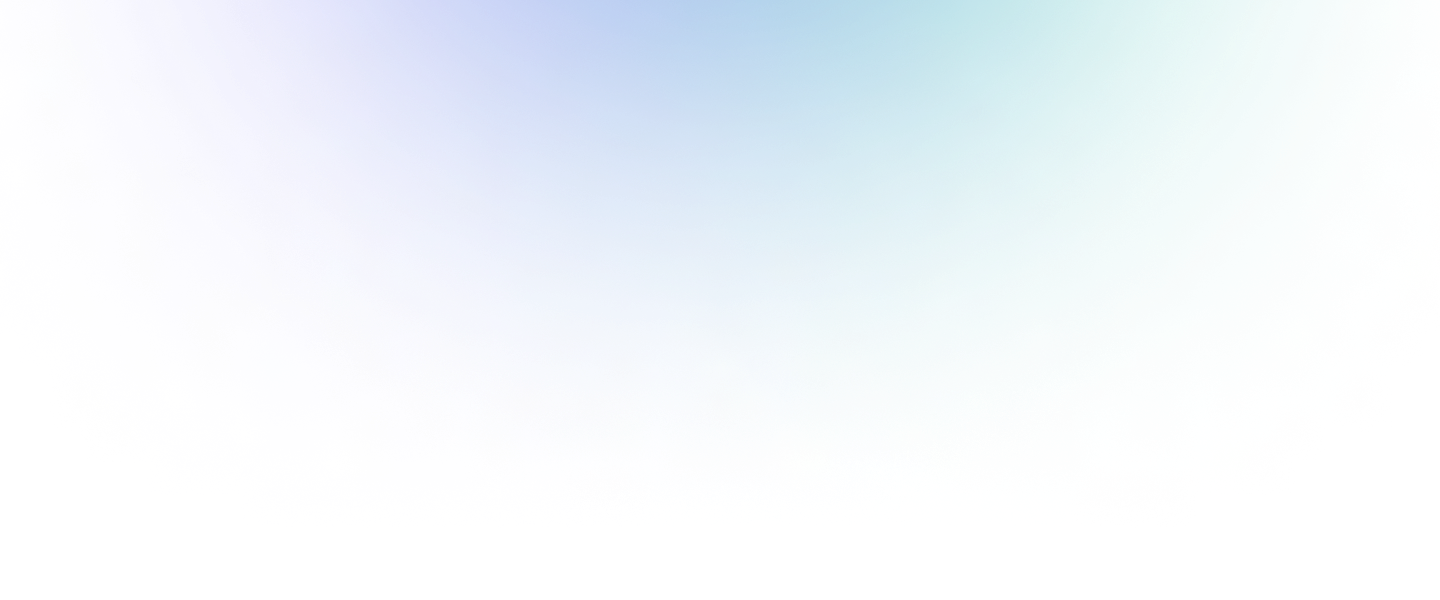
Join our community to see how developers are using Workik AI everyday.
Features

Accelerate Image Processing
AI suggests optimized operations for filtering, edge detection, and segmentation using NumPy and scikit-image.

Build Vision Workflows
Use AI to generate modular pipelines for face detection, motion tracking, or gesture recognition with Mediapipe or Fastai.

Generate Object Detection Pipelines
AI creates real-time object detection code using YOLO and TensorFlow, ensuring integration and scalability.

Optimize Performance
AI helps refactor code for speed and efficiency for enhancing multi-threading and matrix operations with PyTorch.
How it works
Sign up on Workik with Google or manually in seconds, and start creating your OpenCV projects instantly.
Integrate project files or repositories from GitHub, GitLab, or Bitbucket. Define your framework, image processing goals, and tool preferences for precise, AI-driven guidance.
AI can generate OpenCV code, optimizing image analysis, object tracking, and enabling advanced feature detection. It adapts to your project for video processing, motion detection, and more.
Invite team members to Workik to collectively enhance vision workflows, debug OpenCV pipelines, and streamline development with AI-powered insights.
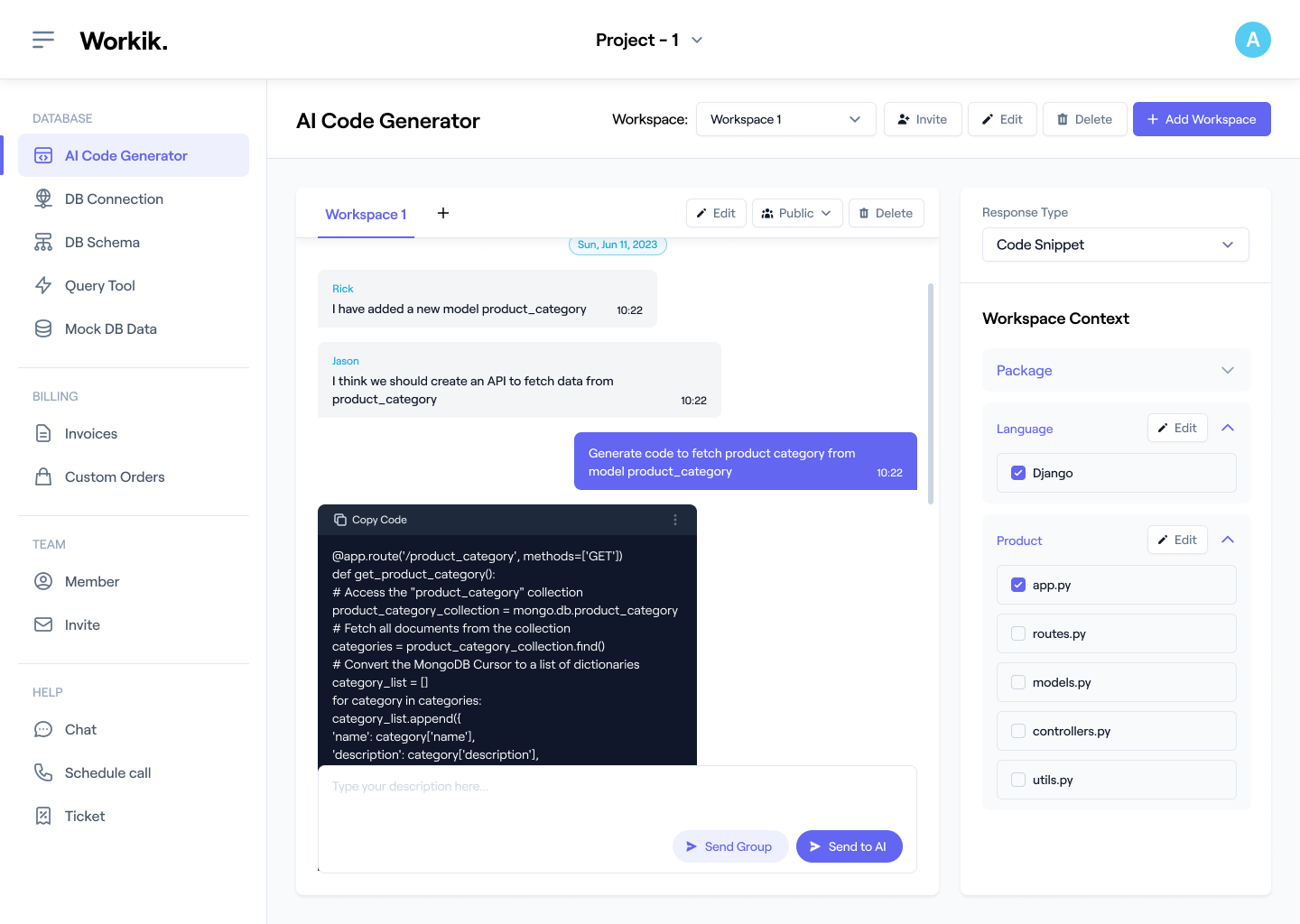

Expand
.png)
.png)
Expand
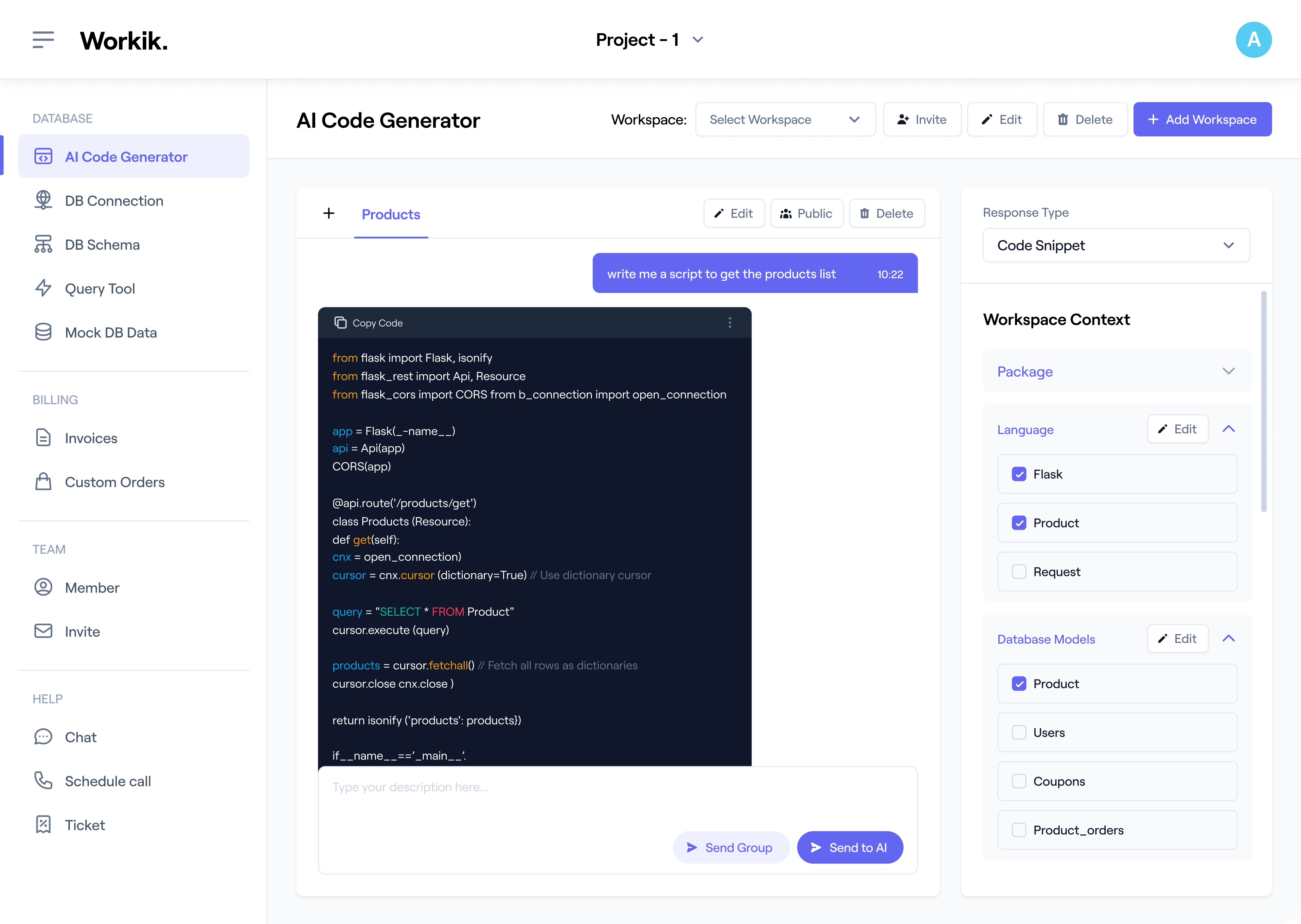

Expand
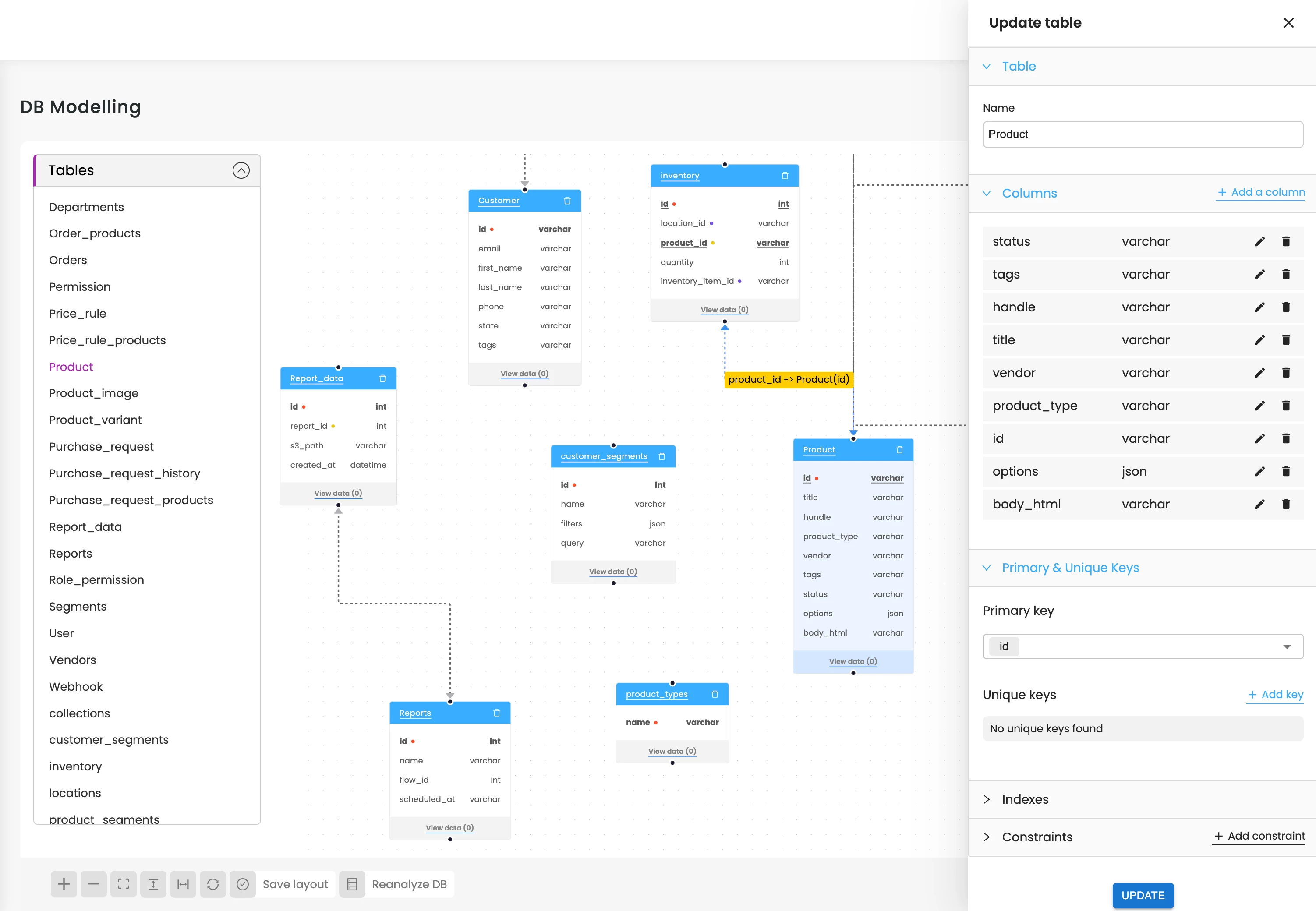

Expand
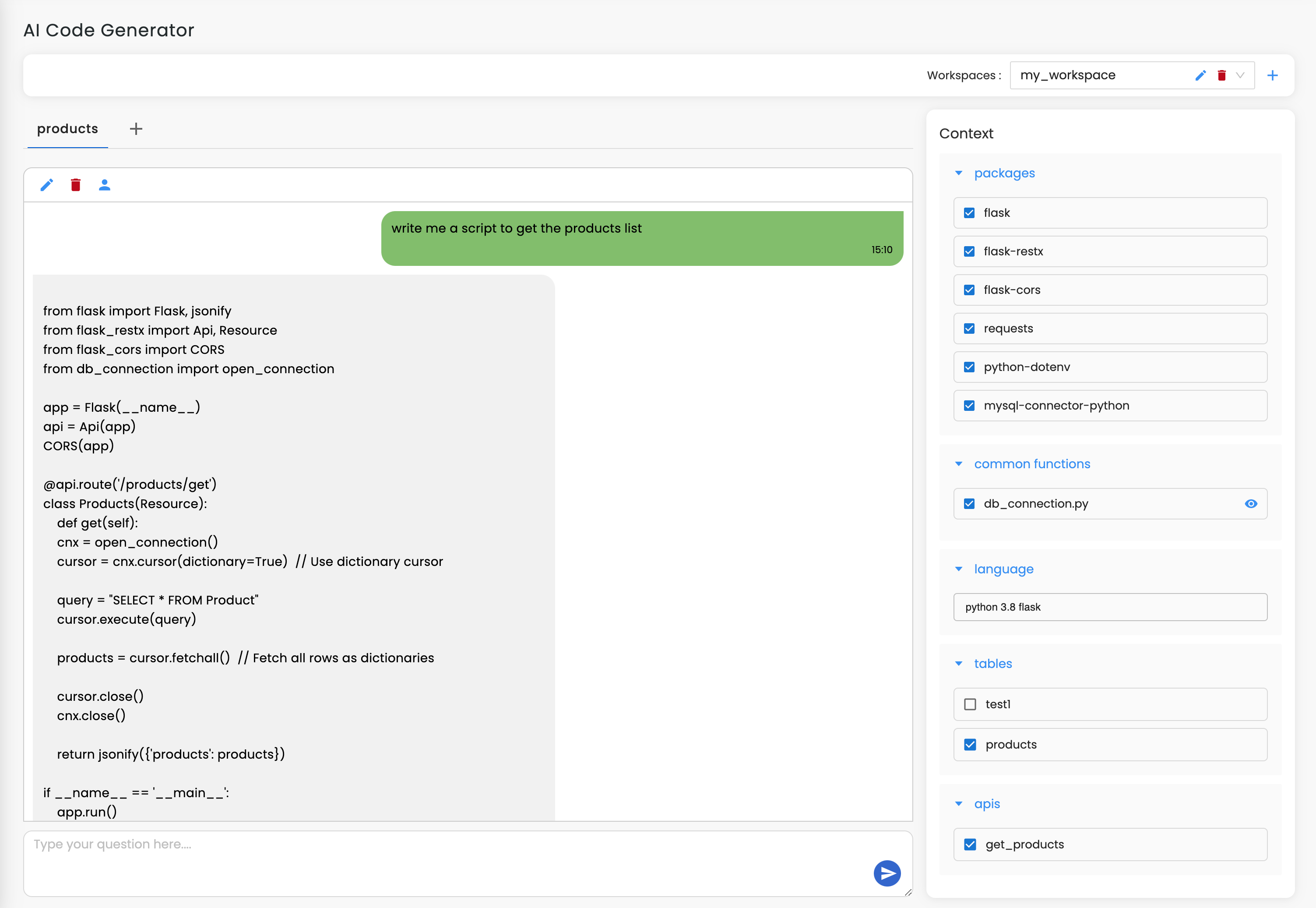

Expand


Expand


Expand


TESTIMONIALS
Real Stories, Real Results with Workik
Workik AI saved us countless hours, automating object detection pipelines has been a game-changer.

Nancy Simon
Computer Vision Engineer
I loved how Workik AI streamlined complex OpenCV workflows like real-time image processing and feature tracking.

Kol Carter
Data Scientist
Integrating Workik AI into our team has transformed our development cycle. I use it to optimize OpenCV code for performance in seconds!

Ruby Rodriguez
Senior Software Engineer
What are the popular use cases of the Workik AI-Powered OpenCV Code Generator for developers?


Popular use cases of the Workik AI-Powered OpenCV Code Generator for developers include but are not limited to:
* Automate image processing tasks like thresholding, filtering, and edge detection.
* Generate object detection pipelines for real-time applications.
* Refactor complex vision algorithms for speed and accuracy.
* Build motion tracking or gesture detection workflows.
* Optimize OpenCV code for multi-threading and GPU acceleration.
* Simplify 3D reconstruction or camera calibration processes.
What contexts can I add to optimize AI-powered OpenCV code generation in Workik?


To enhance AI-powered OpenCV code generation, you can add any of the following context on Workik:
* Import project files or sync repositories from GitHub, GitLab, or Bitbucket.
* Specify libraries and frameworks like TensorFlow, PyTorch, or Mediapipe.
* Define specific tasks such as object detection, image warping, or feature matching.
* Add configurations for camera parameters or hardware details for calibration.
* Include pre-trained model details or datasets for custom pipeline integration.
* Provide requirements for real-time performance or cross-platform compatibility.
How does Workik AI handle OpenCV pipelines for multi-camera setups?


Workik AI can generate synchronized OpenCV pipelines, enabling tasks like panoramic stitching or 3D depth estimation. For example, developers can use AI to streamline the alignment of feeds from multiple cameras, creating a unified 360-degree surveillance system.
Can Workik AI assist in pre-processing for machine learning with OpenCV?


Yes, Workik AI can help in steps like image normalization, cropping, and augmentation using OpenCV, optimizing datasets for training with frameworks like TensorFlow or PyTorch.
How does Workik AI help with OpenCV integration in robotics?


Workik AI can generate vision systems for robotics, such as real-time object tracking or navigation. For example, developers can use AI to create a pipeline that enables a robot to detect and follow a specific object while avoiding obstacles, leveraging OpenCV’s contour detection and optical flow features.
Can Workik AI optimize OpenCV for resource-constrained devices?


Absolutely! Workik’s AI provides tailored code for lightweight OpenCV applications on devices like Raspberry Pi or Jetson Nano. For example, it can refactor pipelines to reduce memory usage and processing overhead, ensuring real-time object detection runs efficiently on low-power hardware.
Can Workik AI help in building augmented reality (AR) applications with OpenCV?


Yes, Workik AI can generate code for marker detection, pose estimation, and 3D model overlays. For example, you can use AI to streamline the setup for tracking AR markers in Unity-based applications, saving time on complex configurations.
Generate Code For Free

OpenCV: Question and Answer
OpenCV (Open Source Computer Vision Library) is a powerful library for computer vision and machine learning. It provides tools for real-time image and video analysis, including features like object detection, image processing, camera calibration, and 3D reconstruction. OpenCV is widely used in robotics, augmented reality, and machine learning projects.
Popular tools and frameworks used with OpenCV include:
Deep Learning Frameworks:
TensorFlow, PyTorch, Keras
Image Processing Tools:
scikit-image, PIL, OpenCL
Visualization Libraries:
Matplotlib, Seaborn, Plotly
Hardware Support:
NVIDIA CUDA, Jetson Nano SDKs
Development Environments:
Visual Studio Code, PyCharm, IntelliJ IDEA
AR/VR Platforms:
Unity, Unreal Engine
Popular use cases for OpenCV include:
Healthcare:
Automate medical imaging tasks like tumor detection or radiology analysis.
Retail:
Power smart checkout systems with object detection and customer analytics.
Security and Surveillance:
Implement real-time facial recognition and motion tracking.
Autonomous Vehicles:
Enable object detection and lane tracking for self-driving cars.
Agriculture:
Use drones for crop monitoring, pest detection, and yield estimation.
Sports Analytics:
Analyze player movements, ball trajectories, and game strategies.
Career opportunities and technical roles involving OpenCV include Computer Vision Engineer, Machine Learning Engineer, Robotics Developer, Data Scientist, AR/VR Developer, Full-Stack AI Developer, and Video Analytics Specialist.
Workik AI provides extensive assistance with OpenCV tasks, including:
Code Generation:
Creates pipelines for object detection, feature extraction, and image classification.
Performance Optimization:
Refactors code for GPU acceleration and real-time processing.
Multi-Camera Systems:
Generates synchronized pipelines for panoramic stitching and depth estimation.
AR/VR Integration:
Simplifies marker detection and 3D model overlays.
Cross-Platform Support:
Produces compatible code for mobile, desktop, and embedded devices.
Debugging:
Highlights inefficiencies in pipelines, suggesting fixes for bottlenecks.
Data Augmentation:
Automates preprocessing for machine learning with transformations like rotation, cropping, and resizing.
Collaboration:
Facilitates team workflows with shared environments and AI-generated insights.
Explore more on Workik
Get in touch
Don't miss any updates of our product.
© Workik Inc. 2025 All rights reserved.

